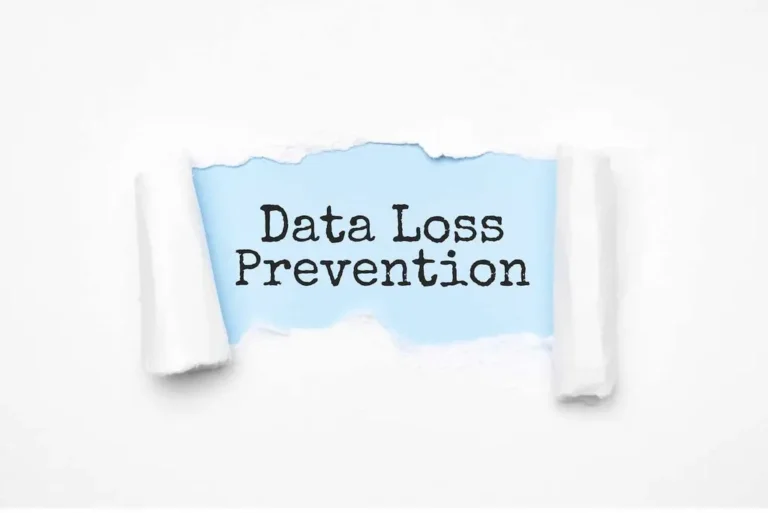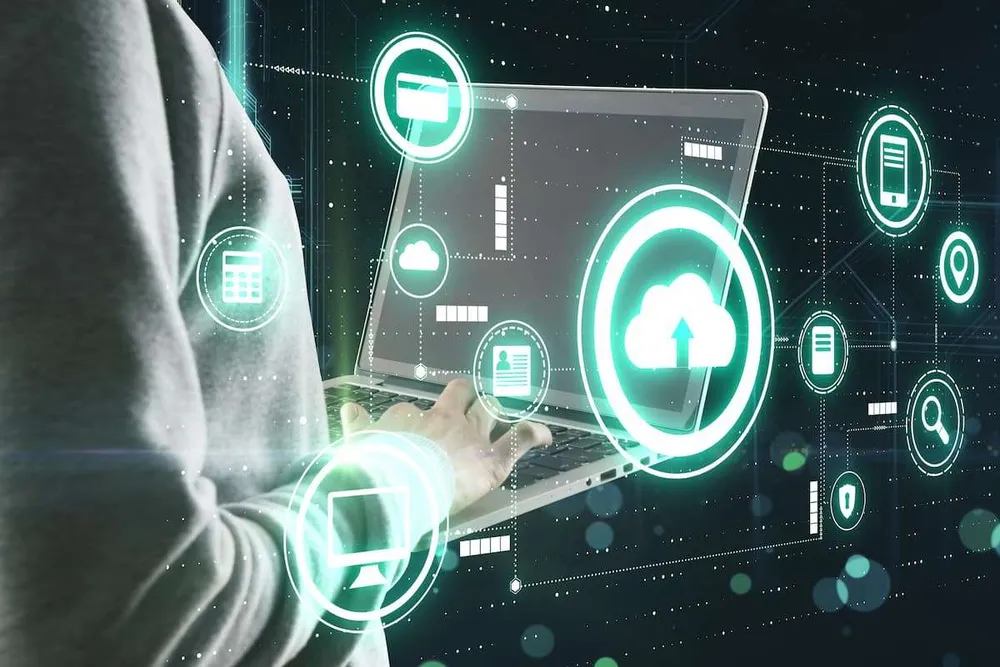What is Data Loss Prevention: Best Practices

Data loss prevention (DLP) is a set of cyber security measures implemented to safeguard information from unapproved access, squandering, or leakage. Deploying dedicated software, top-grade encryption, machine learning (ML), and time-tested approaches to alleviate hazards, companies uphold the law and build trust in brands. Using DLP is instrumental in protecting sensitive information from being shared online and preventing other cases of potential misuse.
Aiming to get a foothold on global markets, enterprises should adhere to the General Data Protection Regulation (GDPR) and other directives to make their strategies transparent. Monitoring info utilization across web-based services, gadgets, and facilities is the surest way to make personally identifiable information (PII) unavailable to malicious actors. In this article, we briefly explain the significance of DLP procedures and explain how agents exploit them to discover patch management issues, control PII usage, enhance data visibility across endpoints, and record potentially perilous events.
Data Loss Prevention: Key Insights
DLP products are built to scan info and unveil possible cases of misuse. Designed to help companies align policies with laws, it checks whether implemented practices meet all current safety requirements. If PII gets compromised, DLP sends notifications to minimize the occurrence of situations when people intentionally or accidentally disclose it and endanger an organization.
Here are the most common reasons to use DLP:
- Protect intellectual property and PII;
- Enhance transparency;
- Secure employees’ devices and info stored on cloud platforms.
Using DLP programs allows ventures to meet auditing requirements and identify areas requiring urgent improvement. Implementing solutions encrypting files and introducing innovative governance practices to control PII retention are important steps toward safety.
Chief Information Security Officers (CISO) task teams with employing DLP solutions to ameliorate the following situations:
- Negligent data leakage: Such cases are typically related to the failure to set access privileges;
- Situations when personnel shares restricted files: Staff members may unknowingly open and compromise confidential docs;
- Phishing: Opening fraudulent emails results in the subsequent disclosure of passwords or bank details. Such attacks can be targeted or have a broader scope, seeking to disrupt the functioning of an entire enterprise.
- Cyberattacks: Hackers employ scareware and ransomware, seeking to destabilize the performance of internal systems, modify code, and eradicate or steal valuable info. Utilizing cloud solutions, encrypting PII, and configuring access enable firms to maintain network stability.
- Malicious software: Often sent via messengers or by email, infected files enable cyber-terrorists to enter working environments and disrupt workflows. Ransomware also destroys vital systems.
Companies should be aware of the whole range of threats that compromise the integrity of their databases and take preemptive steps to avoid them:
- Gain a deeper knowledge of the working environment to identify critical vulnerabilities;
- Implement protection measures, including encryption and right of entry;
- Educate in-staff members to avoid oversharing;
- Introduce tested governance practices to store personal information and meet compliance standards.
DLP requires embracing a holistic approach to detect and avoid the disclosure of confidential files. Using antivirus programs, artificial intelligence (AI), and detection algorithms protect enterprises from cyber-criminals.

We are confident that we have what it takes to help you get your platform from the idea throughout design and development phases, all the way to successful deployment in a production environment!
Why Use Data Loss Prevention Solutions
Integrating DLP products with legacy systems is compulsory to attenuate risks and build a sustainable development strategy. Introducing the CISO role helps CEOs control how safety practices are implemented and get timely updates about the current measures taken to prevent leaks.
Protecting network endpoints involves making PCs, smartphones, and servers secure. Below, we have outlined the main reasons to deploy customized DLP tools:
- Changing legislation: DLP systems enable firms of all sizes to track the recent changes and align plans accordingly.
- Increased usage of cloud-based services: As enterprises prefer such platforms to on-premise solutions, controlling PII becomes the top priority.
- Breaches: Terrorists, criminals, and other actors aim to utilize classified PII for political or financial gain, causing record losses across the globe.
- Money loss: If stolen information is sold online, the company’s competitors will get a cutting edge;
- Large datasets: Firms have to deal with large volumes of intangible assets, which necessitates the deployment of special tools to protect them.
Besides, DLP products enable firms to save money, as they do not need to hire large teams of top-grade specialists to maintain their networks. Due to limited talent pools, it may be arduous to find the right candidates and fill the personnel gap. DLP programs reduce the amount of manual tasks teams have to solve.
Other benefits of DLP include:
- Top-level infrastructure impenetrability;
- Algorithm-based encryption;
- Timely response after disruptions;
- Quick recovery;
- Enhanced control;
- Usage of automation for classification;
- Detection of suspicious behaviors;
- Full compliance;
- Improved supervision.
DLP systems enable managers to oversee proprietary PII and integrate control mechanisms, preventing it from being opened by unauthorized parties.

Examples of Data Loss Prevention Tools and Practices
Utilizing network DLP programs is a cost-effective way to prevent avoidable loss of info. After integrating an Intrusion Detection System (IDS), businesses get notifications about hackers’ actions aimed at accessing PII.
Antiviruses seamlessly integrate with cybersecurity systems and tackle malware-related issues. Installing a firewall facilitates blocking third parties from compromising secure storage.
While these solutions are everything a business may ever need, large and mid-scale enterprises should be required to use a Security Operations Center (SOC) to detect leaks.
Trusted data loss prevention systems contain multiple components:
- Traffic analysis tools to detect compliance issues;
- Endpoint-based block mechanisms to prevent cyberintrusion and sharing;
- Retention capabilities to preserve archived files;
- Features for monitoring activities;
- ML services to classify documents;
- Leak detection solutions.
Integrating DLP apps with IDS, IPS, and SIEM systems allows professionals to get alerts about possible issues and address them immediately.
It may be a laborious task to choose the right DLP program that meets the organization’s needs, but with careful planning, companies can allocate their resources wisely to maintain the brand’s image and make PII inaccessible.
Popular cloud DLP solutions seamlessly integrate with SaaS and IaaS platforms providing top-grade protection to PII and ensuring that it won’t be exposed by accident. Analyzing traffic and typical visitors’ behavior patterns lets organizations prevent unauthorized acquisition.
Informing personnel about the consequences of their actions and teaching them how to detect incidents is another step toward building an advanced infrastructure. Individualized education program initiatives may include classes on the implications of widespread incidents and customized protective measures.
Tips and Reminders
Building a reliable DLP system requires setting clear objectives. Whether a firm wants to protect its intellectual property rights, follow regulations, such as the Health Insurance Portability and Accountability Act (HIPAA), or win customers’ trust by embracing a transparent approach to PII management, deploying specialized software is a must.
Creating a complex environment involves using endpoint DLP, network DLP, and cloud solutions. When looking for a trusted provider offering DLP service, a firm should consider several criteria:
- Deployment architecture;
- Compatible OS;
- Managed services;
- Options for dealing with external and internal hazards;
- The time it takes to integrate DLP mechanisms with a system.
Besides, it is pivotal to consider other technologies an enterprise relies on and check whether they are compatible with a program. Some solutions require firms to hire extra staff to manage them, while others come with automated tools.
Follow these practices to achieve stable growth:
- Identify and label PII;
- Employ encryption to add an extra protection layer;
- Secure the network’s entry points;
- Assign roles and outline liabilities;
- Automate time-consuming tasks;
- Utilize metrics to track data breaches and time-to-response;
- Launch educational program for employees;
- Leverage ML to detect anomalies.
A productive strategy requires transforming a corporate culture. Managers should develop transparent governance policies and develop a comprehensive program to control PII. Using metrics to measure the results facilitates adjusting the selected approach and identifying the things requiring improvement.
DLP requires understanding how end-users and the workforce access PII and what steps should be taken to prevent leakage. Besides using an antivirus suite, enterprises should align strategies with current laws and learn how to deploy DLP apps with low downtime.
Conclusion
Implementing authentication and configuring rights enables specialists to guard endpoints. Utilizing encryption is imperative to guarantee that transmitted info remains non-public. Besides, integrating mechanisms to protect PII stored in on-premise facilities and on the cloud platforms further enhances the safety of all participants.
Users and vendors should be aware of modern security measures and use them to safeguard PII efficiently. Creating sustainable cybersecurity architecture fosters compliance and enables businesses to adopt future-proof practices. With Global Cloud Team solutions, you can be sure that all data is under strict control.
Introducing an all-embracing data loss prevention program streamlines getting insights into how PII is utilized across the network. Such systems require specialized software, engineers, automated tracking, and AI and ML algorithms to track the usage of info. Creating a safe organizational environment requires auditing teams’ work and upgrading applications to counter threats.
Top Articles
What is Hyperautomation: A Comprehensive Overview of Key Components
I am here to help you!
Explore the possibility to hire a dedicated R&D team that helps your company to scale product development.






